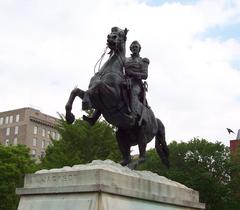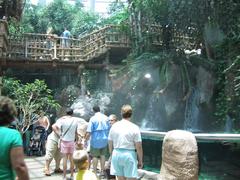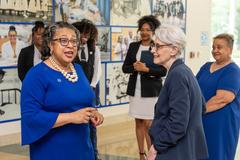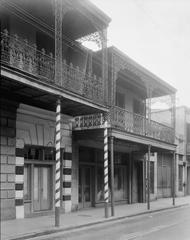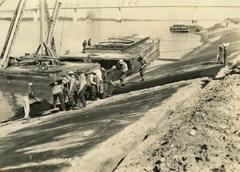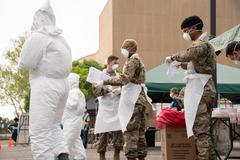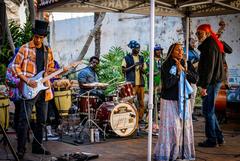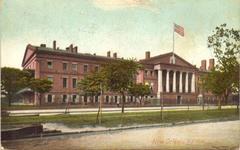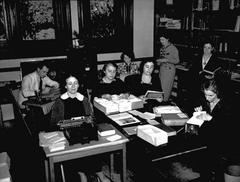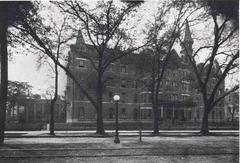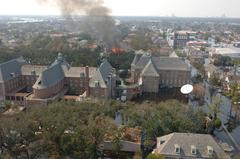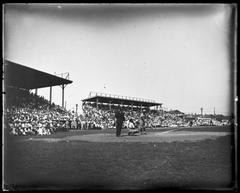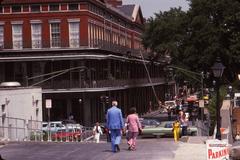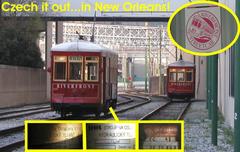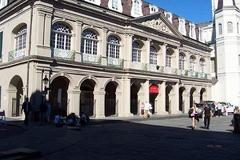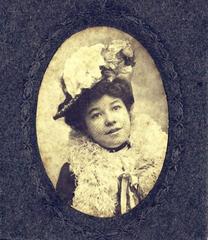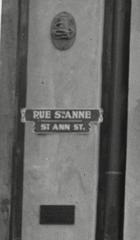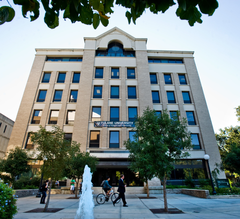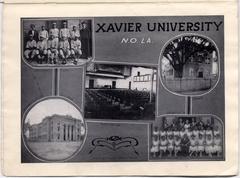Lafayette Cemetery No. 1: Visiting Hours, Tickets, and Historical Significance in New Orleans
Date: 04/07/2025
Introduction
Lafayette Cemetery No. 1, located in the heart of New Orleans’ historic Garden District, is one of the city’s most renowned and visually striking landmarks. Founded in 1833, this cemetery not only reflects the multicultural and architectural heritage unique to New Orleans, but also serves as a “city of the dead” chronicling the stories of generations past. Whether you are a history enthusiast, architecture aficionado, or cultural traveler, Lafayette Cemetery No. 1 offers a fascinating glimpse into the rituals, artistry, and social fabric of the Crescent City.
Table of Contents
- Introduction
- History and Founding
- Architectural Features and Burial Practices
- Social and Cultural Significance
- Preservation, Restoration, and Modern Challenges
- Visiting Information: Hours, Tickets & Accessibility
- Notable Tombs and Historical Figures
- Pop Culture and Filming Legacy
- Practical Travel Tips and Nearby Attractions
- Frequently Asked Questions (FAQ)
- Conclusion
- References
History and Founding
Established in 1833 as the principal cemetery for the former City of Lafayette (now part of New Orleans), Lafayette Cemetery No. 1 occupies what was once the de Livaudais plantation. Its creation coincided with a period of rapid urban expansion and the influx of American settlers following the Louisiana Purchase. Benjamin Buisson, a French surveyor, designed the cruciform layout, with intersecting central aisles and tree-lined quadrants that evoke a parklike serenity amid the city bustle (historic-structures.com; saveourcemeteries.org).
The cemetery was among the first in New Orleans to be non-sectarian and non-segregated, welcoming immigrants from over 25 countries and natives of more than two dozen U.S. states, reflecting the city’s diverse and cosmopolitan identity (hellolittlehome.com).
Architectural Features and Burial Practices
Lafayette Cemetery No. 1 is celebrated for its above-ground tombs, a necessary adaptation to New Orleans’ high water table and a practice inherited from French and Spanish colonial traditions. The cemetery contains approximately 1,000 family tombs and as many as 7,000 burials, with many tombs designed in Greek Revival and Gothic styles (wikipedia.org; freetoursbyfoot.com). Materials such as marble, brick, and cast iron are prevalent, and the ironwork throughout the grounds is notable for its craftsmanship (historic-structures.com).
Unique to the cemetery are the “coping tombs,” open chambers with brick or stone borders that allow for efficient use of burial space. Some can hold dozens of caskets, demonstrating both practicality and a tradition of multi-generational family burials (usghostadventures.com).
Social and Cultural Significance
The spectrum of tombs—from elaborate family mausoleums to communal society vaults—mirrors New Orleans’ diverse social hierarchy and ethnic mosaic. The cemetery’s records, preserved at the New Orleans Public Library, document stories of epidemic, war, and migration, serving as a testament to the city’s resilience (historic-structures.com).
Lafayette Cemetery No. 1 was a prototype for more than 30 cemeteries that followed in the city, establishing the iconic New Orleans tradition of above-ground burials and tree-lined avenues (emmajaneexplores.com).
Preservation, Restoration, and Modern Challenges
Like many historical sites, Lafayette Cemetery No. 1 has suffered from natural disasters, vandalism, and the wear of time—most notably sustaining damage during Hurricane Katrina. Restoration has been ongoing for several decades, led by Save Our Cemeteries and other preservation groups (saveourcemeteries.org). The cemetery is currently closed for major restoration, with a projected reopening in late 2025. Efforts focus on repairing tombs, enhancing accessibility, replanting trees, and improving walkways to preserve the site for future generations (neworleans.com).
Visiting Information: Hours, Tickets & Accessibility
Current Status:
Lafayette Cemetery No. 1 is presently closed for restoration, with an anticipated reopening in late 2025. Always consult official sources for the most up-to-date information before planning your visit.
Typical Hours (pre-restoration):
- Open daily, 7:00 am – 3:00 pm (hours may vary seasonally and are subject to change due to restoration or special events).
Admission and Tickets:
- General admission is free.
- Guided tours (highly recommended for historical context) are available for a fee via authorized companies and nonprofits. In the future, tickets may be required to manage visitor capacity.
Accessibility:
- The cemetery features uneven and grassy paths; manual wheelchair access is limited, while motorized wheelchairs with off-road capability can traverse most areas. ADA improvements are part of ongoing restoration (anythingispossibletravel.com).
- There are no public restrooms or facilities onsite.
Notable Tombs and Historical Figures
- Samuel J. Peters: Often called the father of New Orleans’ public school system (historic-structures.com).
- Oscar Wibel: Honored with a rare Italian marble tomb from 1864.
- Society Tombs: Communal vaults for groups like the Jefferson Fire Co. #22, Odd Fellows, and benevolent societies, each with unique emblems (gregdisch.com).
- Open Tombs: Some, like the Koneig tomb, reveal the unique “condo crypt” system (anythingispossibletravel.com).
The inscriptions, sculptures, and funerary symbols—urns, willows, angels—offer insight into Victorian-era art and the city’s multicultural tapestry (tripwellgal.com).
Pop Culture and Filming Legacy
Lafayette Cemetery No. 1 has played a starring role in numerous films and TV series, adding to its global allure:
- Interview with the Vampire (1994): The haunting tombs served as a backdrop for this classic gothic film.
- American Horror Story: Coven (2013): The cemetery’s evocative setting was central to this supernatural drama.
- The Originals (2013–2018): Key meeting point in this television series set in New Orleans.
- Other appearances include Double Jeopardy, Dracula 2000, and recurring scenes in NCIS: New Orleans (freetoursbyfoot.com; usghostadventures.com; Explore Louisiana).
These productions have boosted the cemetery’s profile as a must-visit site for pop culture and history fans alike.
Practical Travel Tips and Nearby Attractions
- Getting There: Located at 1416-1498 Washington Avenue, across from Commander’s Palace. Accessible via the St. Charles streetcar and #11 Magazine Street bus (gregdisch.com).
- What to Bring: Comfortable walking shoes, water, sun protection, and a camera. Use restrooms at nearby businesses before your visit.
- Etiquette: Be respectful—do not touch or climb on tombs, keep noise low, and avoid photographing during active funerals. All Saints’ Day is a special time to observe traditions of grave cleaning and decoration (anythingispossibletravel.com).
- Nearby Attractions: Garden District walking tours, Magazine Street shopping, St. Charles Avenue streetcar, and the National WWII Museum (tripwellgal.com).
Frequently Asked Questions (FAQ)
Q: Is Lafayette Cemetery No. 1 currently open to the public?
A: The cemetery is closed for restoration, with a projected reopening in late 2025. Check official sources for updates.
Q: Are tickets required?
A: Admission is generally free, but guided tours require tickets, which can be booked online or through local operators.
Q: Is the cemetery wheelchair accessible?
A: Accessibility is limited due to uneven pathways; ADA improvements are part of ongoing restoration.
Q: Can I take photographs?
A: Photography is allowed, but be respectful, especially during ceremonies. Professional shoots may require permission.
Q: Are guided tours available?
A: Yes, guided tours are highly recommended for historical and cultural context.
Conclusion
Lafayette Cemetery No. 1 is more than a burial ground—it is a living monument to New Orleans’ resilience, diversity, and artistic spirit. From its founding in the 1830s through its starring roles in film and television, the cemetery embodies the city’s unique blend of history, architecture, and cultural symbolism. Preservation efforts ensure that future generations can continue to explore and appreciate this storied landmark.
To plan your visit, monitor restoration updates via official New Orleans tourism channels. Consider a guided tour for deeper insight, and enrich your experience by exploring the Garden District and other nearby attractions. Respect the site’s heritage, and immerse yourself in the stories that make Lafayette Cemetery No. 1 a vital part of New Orleans’ soul.
Ready to explore more? Download the Audiala app for audio guides and follow our social media for the latest updates on Lafayette Cemetery No. 1 and other New Orleans attractions.
References
- Lafayette Cemetery No. 1, 2025, Historic Structures (historic-structures.com)
- Lafayette Cemetery No. 1, 2025, Save Our Cemeteries (saveourcemeteries.org)
- Lafayette Cemetery No. 1, 2025, Free Tours by Foot (freetoursbyfoot.com)
- Lafayette Cemetery No. 1, 2025, Hello Little Home (hellolittlehome.com)
- Lafayette Cemetery No. 1, 2025, Emma Jane Explores (emmajaneexplores.com)
- Lafayette Cemetery No. 1, 2025, US Ghost Adventures (usghostadventures.com)
- Lafayette Cemetery No. 1, 2025, New Orleans & Company (neworleans.com)
- Lafayette Cemetery No. 1, 2025, Greg Disch (gregdisch.com)
